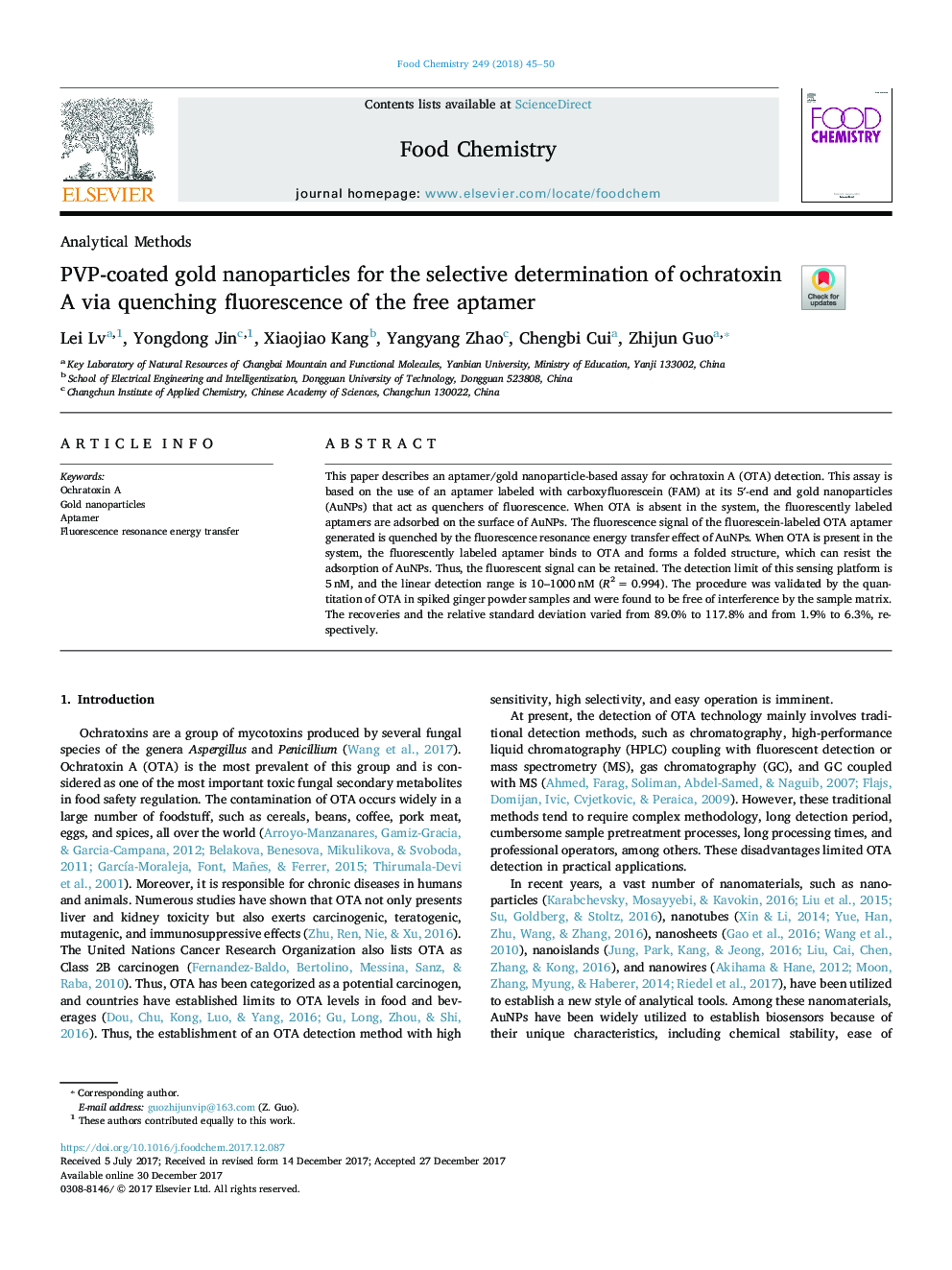| Article ID | Journal | Published Year | Pages | File Type |
|---|---|---|---|---|
| 7585977 | Food Chemistry | 2018 | 6 Pages |
Abstract
This paper describes an aptamer/gold nanoparticle-based assay for ochratoxin A (OTA) detection. This assay is based on the use of an aptamer labeled with carboxyfluorescein (FAM) at its 5â²-end and gold nanoparticles (AuNPs) that act as quenchers of fluorescence. When OTA is absent in the system, the fluorescently labeled aptamers are adsorbed on the surface of AuNPs. The fluorescence signal of the fluorescein-labeled OTA aptamer generated is quenched by the fluorescence resonance energy transfer effect of AuNPs. When OTA is present in the system, the fluorescently labeled aptamer binds to OTA and forms a folded structure, which can resist the adsorption of AuNPs. Thus, the fluorescent signal can be retained. The detection limit of this sensing platform is 5â¯nM, and the linear detection range is 10-1000â¯nM (R2â¯=â¯0.994). The procedure was validated by the quantitation of OTA in spiked ginger powder samples and were found to be free of interference by the sample matrix. The recoveries and the relative standard deviation varied from 89.0% to 117.8% and from 1.9% to 6.3%, respectively.
Related Topics
Physical Sciences and Engineering
Chemistry
Analytical Chemistry
Authors
Lei Lv, Yongdong Jin, Xiaojiao Kang, Yangyang Zhao, Chengbi Cui, Zhijun Guo,
